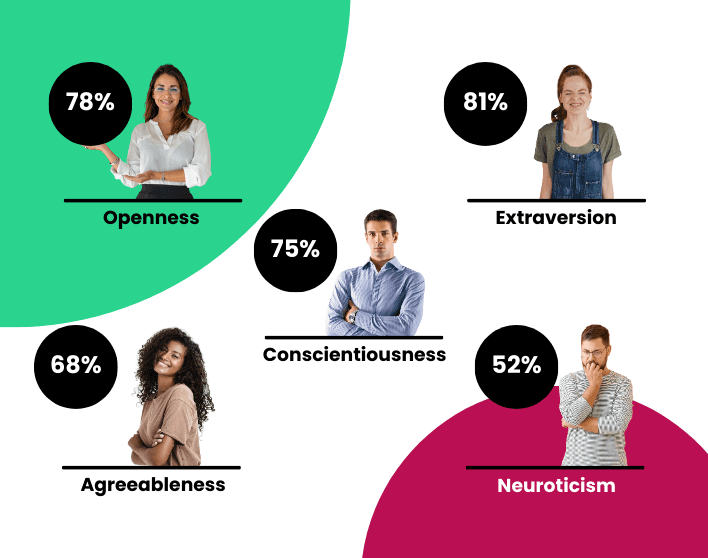The Bryq Team
HR Experts
If you already think that your hiring process is working fine, don’t settle for just okay! Adding a job simulation into the mix can help you to make better hiring decisions. Find out now more about what they are and how to use them in your hiring process.
What is A Job Simulation?
If you haven’t heard of job simulation exercises before, you’re not alone. But it’s about time that you learned about them because they can be a great tool to help you make fantastic hiring decisions.
A job simulation is a simulation test involving real activities an employee might do in the role. They offer a way to assess a candidate on real-life skills and abilities required for the role in question.
A hiring manager recently told me that they couldn’t decide between a few qualified candidates because they all interviewed equally well. This is a common scenario. I told them that adding a job simulation into the mix for their next hiring process was the answer. This can be a way to differentiate and see who’s the best at the skills actually needed on the job.
Then, they wanted to know what the best way is to give these tests. Simple – give them out as at-home assignments before you shortlist or give them when the person comes in for the job interview. Make your life easier by hiring the right people the first time around!
Types of Job Simulations
So, what type of simulation test is going to be useful for your next hire? There is no single common job simulation given to people in a hiring situation. The main thing is that it should be relevant to the role the person is applying for. So, if the role includes customer service, you could try a role-playing exercise to see how they would treat a customer.
Or perhaps in-tray or basket exercises will be useful if the role is more administrative. These work simulations give the candidate several tasks, and they must prioritize them.
Finally, you could try out some situational judgment tests. In this method, you describe a situation to a candidate. For example, a client calls up irate about the services they received yesterday. The candidate describes how they would handle the situation. This lets their critical thinking skills shine, and you can see how they handle tough situations.
Why Should You Be Using Job Simulations?
One of the main questions I get asked about job simulations is ‘What’s the point?’. Well, there are plenty of reasons to add them to your hiring process!
As a hiring manager, employing someone new is a time-consuming and often stressful process. So why on earth would you want to add more complexity to this? Well, job simulations don’t add complexity, but instead, they add clarity to your hiring decision. Be sure of the choice you make by seeing how the person performs on the job. Keep reading to find out more benefits you’ll gain from using job simulations.
Increase Job Satisfaction
You want your employees to be happy at work because they perform better if they are! By simulating a real work environment, the candidate can get more of an idea of what the job entails. When people already know that they enjoy the job tasks, they are more likely to enjoy the job. That’s great not only for you so that you can make a wise decision but also for them to get a thorough understanding of the job.
See What Their Performance Would Be Like
Ever wished you could know in advance what the candidate’s real performance on the job would be like? With job simulations, you can! Give them tasks that your new employee will be doing every day and see how well they do. This way you can be confident that you’re making the right choice when you decide to hire someone (or not!).
Maintain Objectivity
Too often, we hire a candidate just because we like them. The more like us they are, the more likely we are to want to work with them. However, hiring a team of people who are all similar does not make for a harmonious work environment. Hiring a diverse team is the best way to get people who challenge each other and get results. Using job simulations can help you to maintain objectivity in the hiring process. If you have a few candidates who interviewed equally well, you can just choose the one with the best score!
Easy to Use
The main thing that hiring managers dislike about pre-employment tests is that they are a pain to use. They can be time-consuming and difficult to administer. However, job simulations are easy to implement. Just set up the interviewee with the tasks and you’re good to go!
How to Incorporate Job Simulations in Your Hiring Process
Adding job simulations in a hiring process couldn’t be easier. Just get the candidate to come in early and do it before you interview them. Set a time limit for the test and let them get to work.
Alternatively, you can send applicants the exercises to complete online at home. This can be a great way to cut down your interview shortlist if you have too many qualified candidates. Get people to do the test and then only interview those who did well. This has the added benefit of removing a large amount of bias from the hiring process. When you select candidates based on the objective results of the test, you know you’re choosing the right person regardless of race, gender, and other factors.









